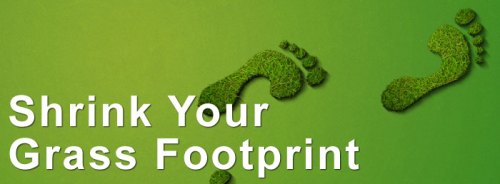
by Tom Hawkins. Tom’s a San Clemente, CA horticulturist and the owner of Florasource Ltd., a supplier of young plants for nurseries and gardens.
The recently implemented “Cash for Grass” program by the City of Los Angeles (D.W.P.) is an earnest attempt at addressing the limitations of our state water supply and the tremendous waste of water in our urban landscapes. But is this based upon sound science and is it a good investment in the long term?
Past city incentives have included synthetic turf rebates, an interesting choice considering published research which points to both environmental and personal health problems that can come with this product. The current program doles out cash when turfgrass is removed and replaced with “something besides turf”. Per the program guidelines, acceptable turf substitutes may include various drought tolerant groundcovers or native plants; emphasis is placed on plants that require a minimum of 15” of water per square foot per year.
Is turfgrass the problem, however, or is it the type of turfgrass we find in our California landscapes? With very few exceptions, California’s residential and commercial lawns are all “exotics”, coming from outside of North America. These turfs include Tall Fescue (Europe), Blue Grass (Europe), Bermuda Grass (Africa), Zoysia (Philippines), Seashore Paspalum (tropical Americas), and St. Augustine (West Indies, West Africa). All of these grasses come from areas with much higher rainfall than California. Of these, tall fescue is our most common landscape turfgrass state-wide, and this grass type is also one of the most water-requiring, using upwards of 40” to 50” of water per square foot per year.
Do we need to give up our lawns? Should we give up our lawns? And is this rebate truly directed at replacing turf with something smarter and for the long run? Temperatures in cities around the world are on the rise due to the urban heat island effect. Numerous studies have shown turf grass to provide the greatest evaporative cooling effect of any planted landscape. Turf also reduces water runoff, increases ground infiltration, and helps to purify water before ground water recharge.
What about using a much more water-friendly turf, such as a native Carex or buffalograss? Years of research at UC Davis and Riverside resulted in a buffalograss selection called ‘UC Verde’; this grass has been shown to get by on just 12” of water per year, makes a beautiful groomed turf at 2-3” tall, or it may be grown as a short meadow at 6” in height. The water savings is 75% over tall fescue lawns…that’s huge.
 Finally, what of the economics of a Cash for Grass program? According to the L.A. Times, Southern California water managers were impressed by the Cash for Grass program in Las Vegas, where water officials report more than 125 million square feet of turfgrass has been removed at a rebate cost of $1.50 per square foot, saving 7 billion gallons of water per year. This is effectively spending $187 million dollars to offset 7 billion gallons of water use, but with the end result of giving up lawns entirely.
Finally, what of the economics of a Cash for Grass program? According to the L.A. Times, Southern California water managers were impressed by the Cash for Grass program in Las Vegas, where water officials report more than 125 million square feet of turfgrass has been removed at a rebate cost of $1.50 per square foot, saving 7 billion gallons of water per year. This is effectively spending $187 million dollars to offset 7 billion gallons of water use, but with the end result of giving up lawns entirely.
The estimated cost of switching out an existing lawn for a more environmentally correct lawn variety comes to less than $ 0.75 per square foot, all the while allowing for the long term benefits of turfgrass and without adversely affecting our local climate. This may make sense (and cents) at almost anytime, but especially so when expenditures and climate change are daily concerns.
Photos: Top, UC Verde Buffalograss, uncut. Bottom: UC Verde plugs.
